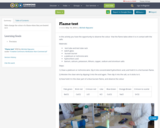
Salts change the colour of a flame when they are heated in it.
- Subject:
- Applied Science
- Material Type:
- Activity/Lab
- Date Added:
- 05/18/2018

Salts change the colour of a flame when they are heated in it.

In this activity, students investigate how pressure affects the temperature of air and how this relates to the formation of clouds in the troposphere. They will form a cloud in a bottle, find the dew point and relative humidity of air at different places in the school and use a chart to estimate how high that air would have to rise to form a cloud.
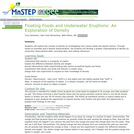
This is a classroom lab where students will explore the concept of density by investigating how various solids and liquids interact.
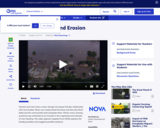
In this video segment adapted from NOVA, scientists investigate how farming along the Mississippi River impacts floods and what can be done about it.

In this activity, students use a National Weather Service flood forecast, USGS gauging data, and other reports to estimate the maximum storm discharge from the New River and Wolf Creek, two streams in the Southeast U.S. which experienced flooding in November 2003. Topographic and urban maps are used to predict where flooding would occur and to evaluate strategies for reducing flood risk for the residents of the region.
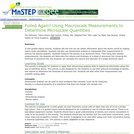
This activity is a guided inquiry activity where students take simple measurements and use unit analysis to determine the thickness of a sheet of aluminum foil, the volume of an aluminum atom, and the radius of an aluminum atom.
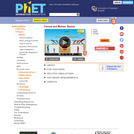
Explore the forces at work in a tug of war or pushing a refrigerator, crate, or person. Create an applied force and see how it makes objects move. Change friction and see how it affects the motion of objects.
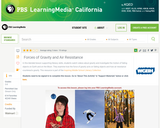
In this lesson designed to enhance literacy skills, students learn how the forces of gravity and air resistance affect the motion of falling objects.
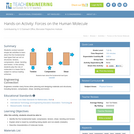
Students conduct several simple lab activities to learn about the five fundamental load types that can act on structures: tension, compression, shear, bending and torsion. In this activity, students play the role of molecules in a beam that is subject to various loading schemes.
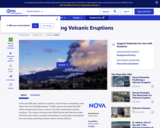
This media-rich essay from NOVA Online describes the challenges of forecasting volcanic eruptions and includes information about specific cases.
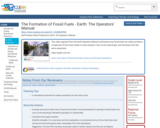
This video segment from the Earth Operators Manual summarizes how fossil fuels are made, provides a comparison of how long it takes to store energy in coal, oil and natural gas, and discusses how fast we're using them.
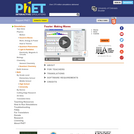
Learn how to make waves of all different shapes by adding up sines or cosines. Make waves in space and time and measure their wavelengths and periods. See how changing the amplitudes of different harmonics changes the waves. Compare different mathematical expressions for your waves.
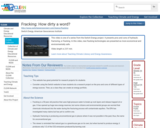
This video is one of a series from the Switch Energy project. It presents pros and cons of hydraulic fracturing, or fracking. In this video, new fracking technologies are presented as more economical and environmentally safe.
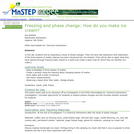
This activity is an extension where students freeze a liquid, making ice cream.
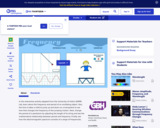
In this interactive activity adapted from the University of Utah's ASPIRE Lab, investigate frequency in terms of trampoline jumps, pendulum swings, and electromagnetic waves.
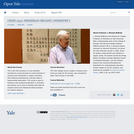
This is the first semester in a two-semester introductory course focused on current theories of structure and mechanism in organic chemistry, their historical development, and their basis in experimental observation. The course is open to freshmen with excellent preparation in chemistry and physics, and it aims to develop both taste for original science and intellectual skills necessary for creative research.
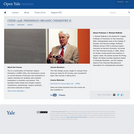
This is a continuation of Freshman Organic Chemistry I (CHEM 125a), the introductory course on current theories of structure and mechanism in organic chemistry for students with excellent preparation in chemistry and physics. This semester treats simple and complex reaction mechanisms, spectroscopy, organic synthesis, and some molecules of nature.

UCSD Division of Physical Sciences presents a discussion on global warming and the prospects of a hydrogen economy. The featured speakers are: Joseph J. Romm, executive director of the Center for Energy and Climate Solutions and author of The Hype About Hydrogen - Fact and Fiction in the Race to Save the Climate; and Franklin M. (Lynn) Orr, Jr. professor of petroleum engineering and project director of the Global Climate and Energy Project at Stanford University. (59 minutes)
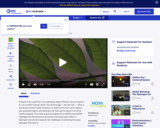
In this video segment adapted from NOVA scienceNOW, hydrogen fuel cell cars promise pollution-free driving, but will we see them anytime soon?
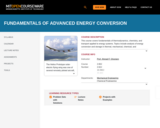
This course covers fundamentals of thermodynamics, chemistry, and transport applied to energy systems. Topics include analysis of energy conversion and storage in thermal, mechanical, chemical, and electrochemical processes in power and transportation systems, with emphasis on efficiency, performance, and environmental impact. Applications include fuel reforming and alternative fuels, hydrogen, fuel cells and batteries, combustion, catalysis, combined and hybrid power cycles using fossil, nuclear and renewable resources.